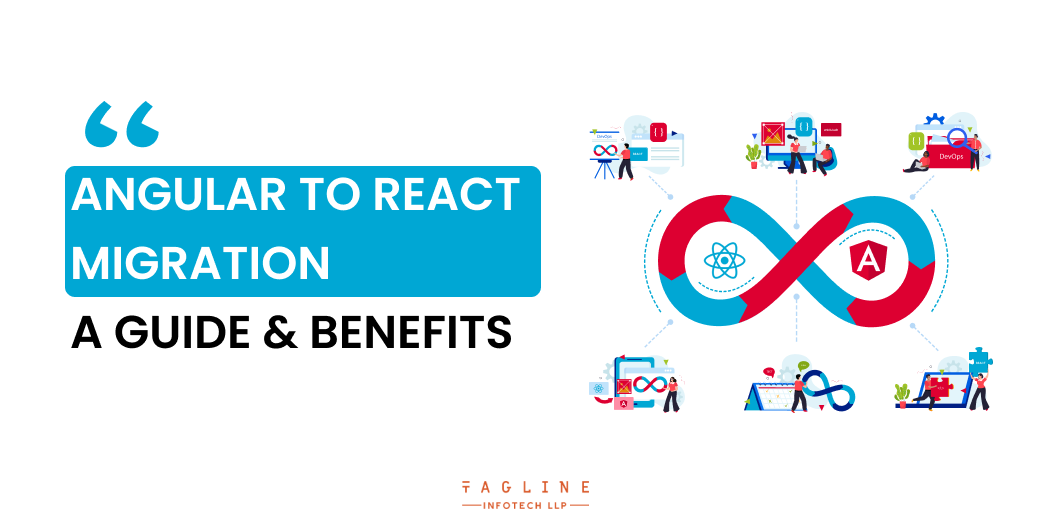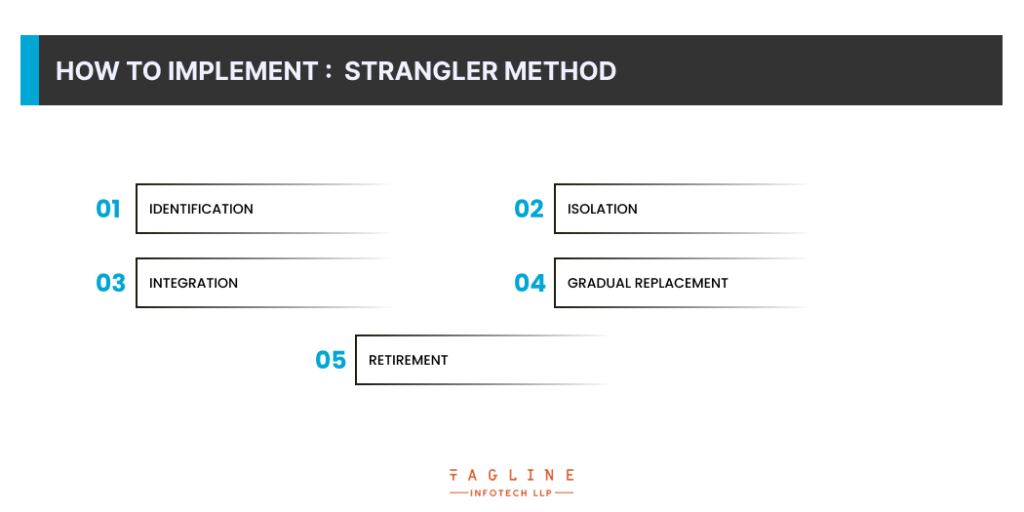How to Set up Google Firestore Database IOS?
May 21, 2024
Home >> AngularJS >> Angular to React Migration: A Guide & Benefits

Quick Summary
Systematically replacing the Angular-powered code and functions with React’s cutting-edge libraries, so the code doesn’t need to be completely rewritten. In this blog, you can understand the whole process of Angular Js to React migration. Different migration strategies for moving from Angular to React Migration may include systematic adjustments. The existing code, which is tested, debugged, and functional code built on the Angular framework, must be properly refactored for the migration to be completed.
Depending on the scale and complexity of your present solution, migrating your code base isn’t inherently difficult, but it may need some time and effort. You may move away from AngularJS using one of three basic strategies. They are:
This package allows you to load several apps as front-end microservices without reconfiguring your system.
Since implementing so with an AngularJS app proved too laborious at the move, I’m not too familiar with the answer.
The majority of examples are for completely new apps. Please share your thoughts with me if you know someone who can speak to a legacy migration solution.
Iframe applications provide a smooth experience while avoiding conflicts because independent programmes operate inside a parent app.
They need different domains, pipelines, security, and repositories. This method helps modernise technology and design with no historical restrictions while streamlining data exchange, utility sharing, and routing.
When necessary, it allows for a gradual transition and replacing legacy components.
React apps may be seamlessly integrated into AngularJS projects using tools like “react2angular,” which makes switching from monolithic to contemporary construction methods easier.
Data and services may go back and forth between the two frameworks, allowing for a progressive transfer that keeps up productivity.
However, a full switch to React is advised in the long term given the end of support for AngularJS.

See the reasons why developers prefer to migrate from Angular to React. Working with React requires more work, but it also offers several advantages, including:
Most of your web app’s features are defined for you by Angular because it is a JavaScript framework. While some developers support such a partisan approach, many consider it constrictive.
React is a JavaScript library, so developers may use it as a blank canvas to create the ideal solution for their clients. AngularJS to React migration is helpful because it works to fill the gap between the old and new world.
Your app’s structure, selection of the best React design pattern for the job, and use of React developer tools are all given additional freedom.
The user interface development process used by React is component-based.
The development and testing process is simplified and made more effective by segregating the concerns for each component and constructing controlled tests for specific components.
If you go from Angular to React migration, you will notice a cultural shift in how these technologies treat you.
React is more of an a la carte choice, whereas Angular is a fixed dinner option. The construction blocks are yours to pick from and swap as appropriate.
With this method, developers may create unique, tailored solutions for every issue or component of a client’s project.
The factor lifecycle characteristic, which underpins the component-powered simplicity of the React JS API, allows you to manipulate website additives with a minimum variety of them.
Similar to React JS, React ES6 class component characteristics like nation, props, and others allow builders to actually and smoothly alter the primary internal components of the code.
The Fetch API and Axios API make integrating statistics into React apps exceedingly smooth and efficient.
In the React JS framework, defining ES6 class and useful stateless additives is also quite honest.
A faster engine than Angular powers react. React’s digital DOM implementation and rendering optimizations make it faster than Angular, resulting in a better consumer revel in
Looking for a skilled developer to lead the migration from Angular to React?
Connect with us Our Reactjs experts developer are skilled in Angular to React migration, ensuring a smooth migration process.
Migrate Angular to React can introduce some risks and demanding situations, as outlined below:
Migrating from legacy systems to trendy technology is an important decision for many corporations.
Two common strategies for this transition are the “Rewrite Method” and the “Strangler Method.” Each technique has its set of advantages and downsides.

How to Implement
Advantages
Disadvantages
Also Read : Angular vs React: Which is Better Front-end Frameworks for Web Development?

How to Implement
Advantages
Disadvantages
Choosing the right migration strategy depends on your agency’s wishes, finances, and timeline.
While a complete rewrite offers a clean slate, the strangler method allows for sluggish, much less disruptive modernization. Ultimately, the selected technique must align with your lengthy-term goals and resources.
Migrating from Angular to React is a sizable choice that could convey several advantages, including progressed flexibility, factor-based UI improvement, a constructing blocks technique, an easier API, and quicker performance.
However, it is important to be aware of ability dangers, inclusive of the complexity of the migration method and search engine marketing indexing demanding situations. The experienced team of developers easily migrate Angularjs to React application to improve its overall performance.
When challenging such a migration, companies must cautiously consider their strategies, whether or not opting for an entire rewrite or the incremental Strangler Method.
Remember that the migration method selection must align with your business enterprise’s precise wishes and lengthy-time period goals.
Get in touch with an AngularJs development company who integrate some of the best third-party plugins to create best solution for your business.
Both strategies have advantages and downsides, so assessing your legacy gadget, comparing the resources, and planning accordingly is important.
Yes, some dangers include the complexity of the migration manner and the ability to search engine optimization indexing troubles, which can affect the visibility of the software in search engine effects.
Two not unusual techniques are the "Rewrite Method," which entails rebuilding the gadget from scratch, and the "Strangler Method," which progressively replaces legacy components through the years.

Digital Valley, 423, Apple Square, beside Lajamni Chowk, Mota Varachha, Surat, Gujarat 394101
+91 9913 808 2851133 Sampley Ln Leander, Texas, 78641
52 Godalming Avenue, wallington, London - SM6 8NW